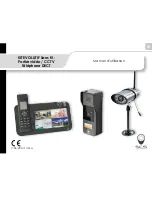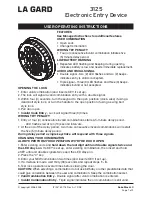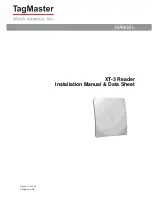
Page 11
Copyright © 2005 - ASR Electronics. All rights reserved.
At this point take the pin/lead-out cable assembly and make certain that the pins fit through the slot with a
little clearance all around.
Don’t drill the holes for the mounting screws yet though, that comes later.
The time has come now to turn our attention back to the head unit. Before actually mounting anything, it’s a
good idea to prepare the points on the PCB in the base unit we are going to connect to. The section
immediately following refers to the installation of the low-level output buffer, the Auxiliary Input switching
board follows later in the text.
The buffer (output) board:
Appendix A shows a detailed photograph of the area of the base PCB we’re concerned with for most
models, as well as details of the corresponding points on the buffer board. For those with the “Premium”
sound system (such as Calais and some HSV models) refer to appendix B to identify the connection points
and any other mounting differences. If you look closely you can see that we’re actually going to pick up
these connections at vias on the PCB. (a “via” is simply a plated copper sleeve passing through the board
to connect tracks on one side to the other) Due to it being copper, we’re easily able to solder to it – but to
make it a little easier still, it’s best to “tin” the via with fresh solder, then extract that solder to clean the hole
out before poking the connecting wire through it.
The easiest way to tin the vias is to thread some
0.5mm solder through the hole from the top side,
then apply the iron from the bottom. (set the unit on
its side so the PCB is vertical) Leave 2-3mm of
solder poking through, bring the iron in contact with
the via (melting the solder on the way in) then feed a
further 2-3mm of solder in from behind as it melts.
This will fill the via with solder of course, but then
use some solder-wick braid to remove it. In really
stubborn cases where the via won’t clean out, use a
pointed toothpick – heat until the solder melts, and
poke the toothpick through from the other side. Once
the solder solidifies again, pull out the toothpick.
Refer to the appendix and tin each of the vias indicated as applicable. The point for the +12V connection in
standard single and six stacker units will be already tinned, and will simply need the solder cleaned out.
(make sure you get the correct point for this connection – there are pads very nearby which look the same
but are not!) Premium system owners must pick up power from the bottom side of the PCB – refer to the
appendix.
Take care when you’re tinning the vias – if too much heat is held in contact for too long, the bond
holding the via can fail, and it can become dislodged.
Take the buffer board and determine where it will be mounted. There’s plenty of space, just make sure it
won’t get in the way of the connection points for the CD player – you want to be able to reconnect that when
the job’s done. I recommend the location shown in the photos that follow, as it keeps the wiring as short as
practical and is well enough out of the way. Once the position is determined, use hot melt glue to attach the
three nylon standoffs to the base unit PCB – the position isn’t critical, just make sure they don’t interfere
with components on the base board and will provide adequate support to the buffer board. It doesn’t matter
if some of the hot melt glue gobs over the components on the base PCB, just make sure the standoff itself
isn’t sitting on top of any components. Don’t glue the buffer board to the standoffs yet though, we need to
sort out some internal wiring.
Supplied in the kit are some short lengths of thin hook-up wire – a red and orange one joined together (for
the right channels front and rear), a white and grey one joined as well (for the left channels), a single purple
wire (for the standby signal), and a single red and black wire (12v supply and ground). The shielded output
cable and remote output wire have already been attached to the buffer PCB.




































